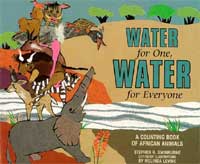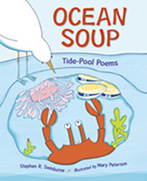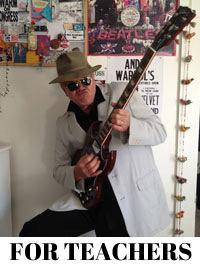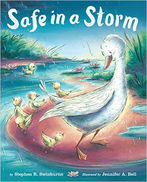Steve Swinburne
Children’s Book Author and School Visits
Water for One, Water for Everyone - for teachers

Illustrated by Robin Brickman.
Published by Millbrook Press, 1996.
Hardcover 1-56294-182-8.
Book Description
On a very dry day in Africa, one tortoise found a lonely waterhole. The tortoise tasted the water and the water in the hole went down.
So begins this cumulative tale of thirsty animals in search of a drink. A lone tortoise is followed by a pair of bee-eaters who, in turn, are followed by a trio of baboons. Next come four warthogs, five ostriches, and ever-increasing numbers of other animals native to east-central Africa – and they’re all is search of a drink.
After each group drinks its fill, the water in the hole drops more until, at last, inevitably, the waterhole is empty. The disappointed animals react in their own way. The tortoise sighs, the baboons scratch, the warthogs grunt, and the zebras neigh – but it is the might elephants that solve the problem so that, once again, there is water for everyone.
At the end of the book is a chart that names the animals and shows youngsters how to count in Swahili, the language native to the region in which the story takes place.
This simple cumulative counting tale is enhanced by cut-paper illustrations that maintain the simplicity of the story while conveying the appeal of the animals.
How I was inspired
When my wife and I got married in 1984 we went on a safari honeymoon to Kenya in Africa. As we drove around Kenya on safari, I noticed how many of the animals were attracted to the small waterholes. These waterholes offered animals a great place to drink and sometimes all sorts of animals might arrive to take a drink. It wasn’t until 1994, ten years after visiting Africa that I came up with the idea of WATER FOR ONE, WATER FOR EVERYONE. Sometimes authors file their ideas way back in their “hair-covered computers” and then one day write their stories.
Book features
- Cut-paper illustrations
- Notice the first letter of text on each page. As the animals drink the water level in each letter decreases.
- Onomatopoeia
- Swahili language
Classroom Connections
- Have students dress as animal characters and perform the story.
- Have students create their own cumulative counting book.
- Make a list of all the words that “sound” like their meaning.
- Make sounds like the animals.
- Make a list of other animals that live in Africa.
- Learn and recite Swahili words.
- Make a chart showing how the various animals that come to the hole are alike and different.
- Make animal masks with paper plates. What do you think the animals would say if they could talk?





